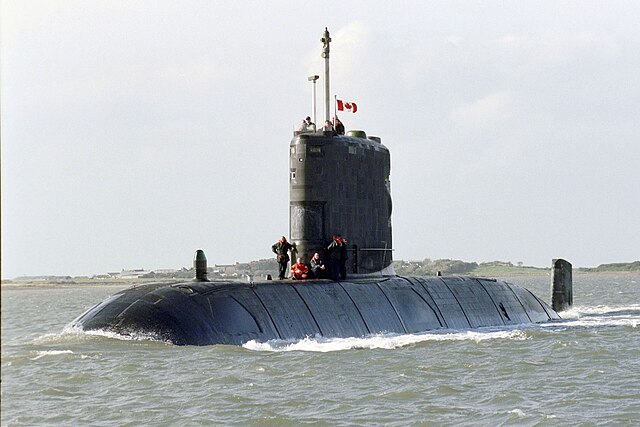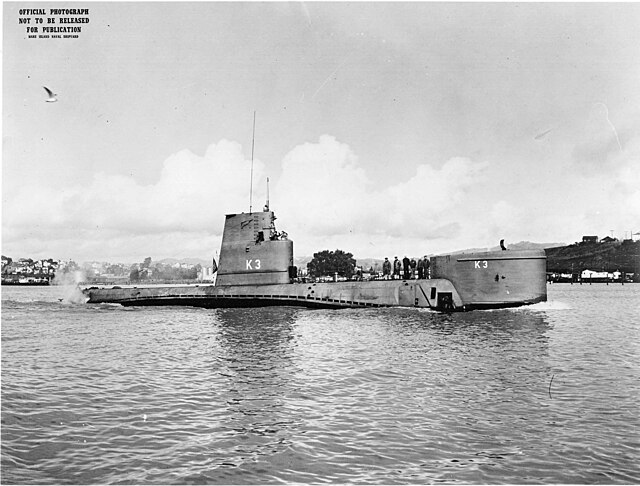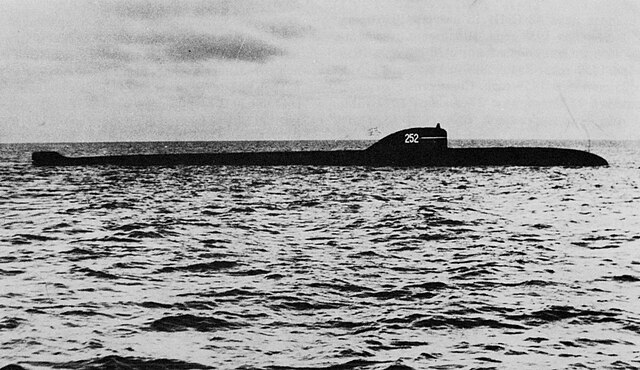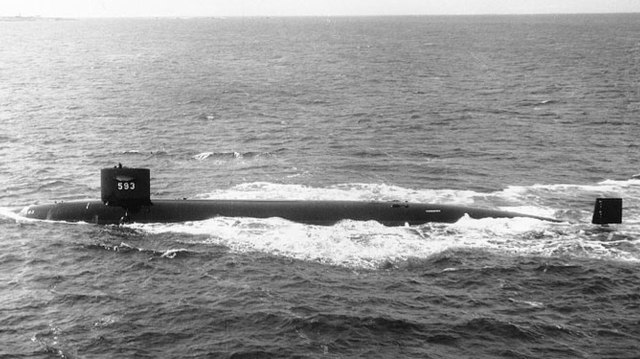The Barbel-class submarines, the last diesel-electric propelled attack submarines built by the United States Navy, incorporated numerous, radical engineering improvements over previous classes. They were the first production warships built with the teardrop-shape hull first tested on the experimental USS Albacore (AGSS-569), and the first to combine the control room, attack center, and conning tower in the same space in the hull. They were of double hull design with 1.5-inch thick HY80 steel. This class of submarine became part of the United States Navy's fleet in 1959 and was taken out of service 1988–1990, leaving the Navy with an entirely nuclear-powered submarine fleet.
The launch of USS Blueback (SS-581) in 1959
An attack submarine or hunter-killer submarine is a submarine specifically designed for the purpose of attacking and sinking other submarines, surface combatants and merchant vessels. In the Soviet and Russian navies they were and are called "multi-purpose submarines". They are also used to protect friendly surface combatants and missile submarines. Some attack subs are also armed with cruise missiles, increasing the scope of their potential missions to include land targets.
HMCS Windsor, an attack submarine of the Royal Canadian Navy
USS K-3 with BQR-4 sonar dome
K-5, a Soviet November-class SSN, the threat that made Western conventional SSKs obsolete
USS Thresher, the first high-speed deep-diving SSN optimized for both ASW and surface attack





